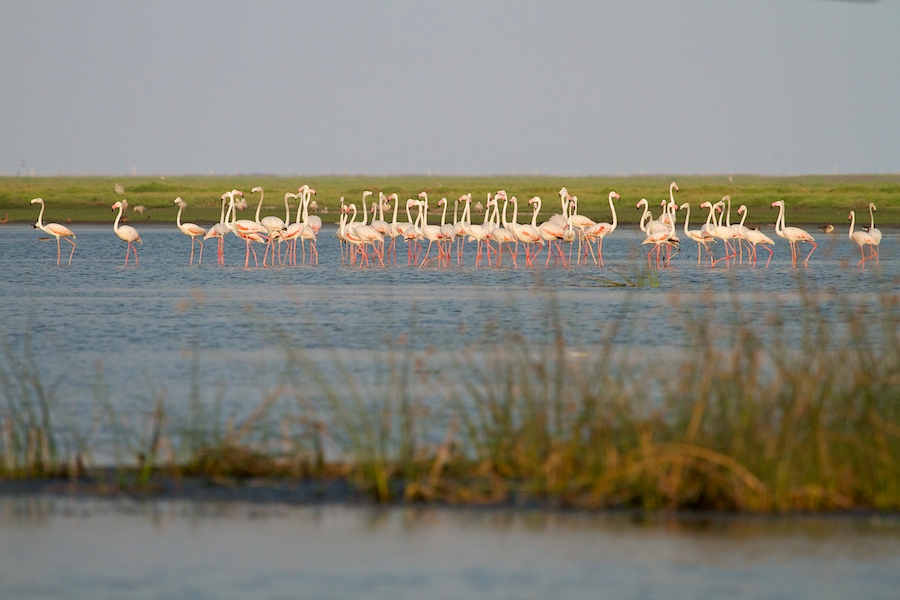
In the winter of 2011-2012, I had the unique opportunity and privilege of being in Lake Chilika, Odisha, for a total of 40 days. While there were many resident and migrant birds to admire, Greater and Lesser flamingos, which used to be regular and abundant visitors to Nalabana Island inside Lake Chilika, were noticeably few. Population studies (done between 2001 and 2005 by scientists from the Bombay Natural History Society) show that around 5000 Greater Flamingos used to arrive until the 2003-2004 season. Thereafter, the numbers dropped to 150. Though they picked up again subsequently, they were nowhere near the earlier counts. At the beginning of our stay, our hopes were kindled when we saw a flock of around 25 Greater Flamingos do a flypast of the Nalabana Island. But as it turned out, our anxious wait for news of arrival or whereabouts of larger numbers only grew longer and wearier.
On the final day of our Chilika expedition, as if on cue, our luck turned ‘pink’. As we were passing Nalabana Island at more than a kilometre away, the experienced and keen eyes of our boatman Bhima, caught sight of large birds in shades of white and pink, near the island’s edge. Our excitement knew no bounds as we approached the birds and observed a mixed-flock of around 60 Greater and Lesser Flamingos (the latter numbered only about 6)). Factors causing decline in arrivals can be numerous and inter-related. These factors can be at work at source, destination or any place in between. Only long-term migration and population studies will reveal the true story. Until then, year after year, many will keenly await the arrival of these beautiful visitors.

 CI is a non-profit, non-commercial portal that aims to facilitate wildlife and nature conservation by providing reliable information and the tools needed to campaign effectively.
CI is a non-profit, non-commercial portal that aims to facilitate wildlife and nature conservation by providing reliable information and the tools needed to campaign effectively.
Chosen as 'Picture of the Week'
Wetlands fulfill the food and habitat requirements of various waterbirds, including charismatic ones like flamingos. Though wetlands are amongst the most productive ecosystems on Earth, since 1990, with the alleged intention of recovering these lands for other uses, nearly half of the world's wetlands have been destroyed. Compared to countries like UK, studies on wetlands are still in an embryonic stage in India. The good news is that organizations like the Bombay Natural History Society, supported by the Chilika Development Authority and the Forest Department of Odisha are involved in continuous bird monitoring and research at Chilika. Current studies classify 50% of the species -- with known population trends -- as 'declining'.